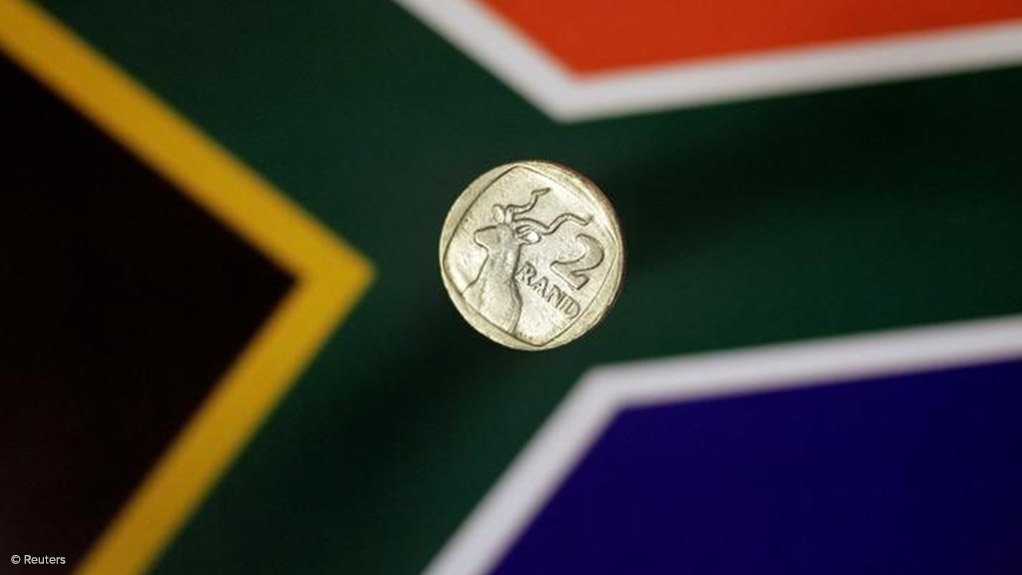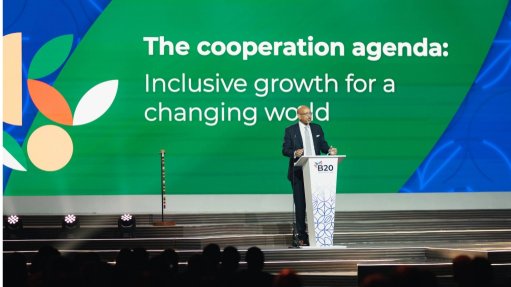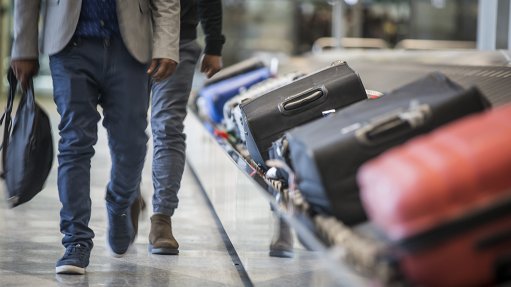TIPS highlights positive second-quarter trade, investment movements
Trade & Industry Policy Strategies (TIPS) finds in its latest Real Economy Bulletin for the second quarter of the year that GDP increased by 0.4% year-on-year, against population growth of 1.3% year-on-year, which TIPS economist Seutame Maimele deems concerning.
He explains that nearly all the GDP growth this year has taken place in the professional services sector, including in engineering, software production, cultural work and the law, cleaning and security and personal services.
The manufacturing sector has recovered in the second quarter after recording lower growth rates over the past year; however, manufacturing sales in constant terms have been essentially flat since early 2023, while output in volumes has barely increased since early 2021.
Maimele says most heavy industries grew output in the second quarter, compared with the first quarter of the year, but output contracted compared with the second quarter of last year.
He adds that one of the prominent factors affecting the South African economy is export mineral prices which have fallen significantly following speculative peaks in 2022 – barring gold and chrome that remain strongly priced.
Another contributing factor to South Africa’s low growth is deepening fiscal austerity and rising real interest rates which have dampened domestic demand. While electricity generation has recovered since April, both electricity and rail tariffs increased faster than headline inflation in the second quarter of the year.
Positively, manufacturing added almost 100 000 jobs in the second quarter, but the construction sector lost nearly the same number of jobs in the same period. Both sectors still employ about 300 000 fewer people in the second quarter than they did before the Covid-19 pandemic.
TRADE
Maimele says South Africa’s goods trade surplus grew from R11-billion in the first quarter of the year to R53-billion in the second quarter, which continued an almost unbroken string of surpluses since 2020.
In terms of international trade, while exports declined year-on-year in the second quarter, they rose by R44-billion to R519-billion on a quarter-on-quarter basis.
Mining export values were 25% lower in the second quarter, compared with a 2021 peak that was experienced on the back of commodity price factors.
Manufacturing exports increased by R14-billion quarter-on-quarter, but declined on a year-on-year basis.
TIPS’s Import and Export Tracker finds that there was a trade surplus of R54-billion in the second quarter of the year, compared with a R9-billion trade deficit in the prior quarter.
Exports were down by R21-billion year-on-year, at R519-billion. South Africa’s exports to China, in particular, reached R51.3-billion, comprising 10% of South Africa’s total exports.
China continues to be South Africa’s top export market, particularly for iron-ore, iron and steel, copper, wool and wood pulp.
South Africa’s top five import items amounted to R106-billion and comprised diesel, petrol, automotive components for motor cars, crude oil and components for goods vehicles.
South Africa remains a net exporter to the rest of the continent. Exports into Africa amounted to R141-billion compared with R45-billion for imports – with South Africa importing mostly mineral products such as crude oil from Nigeria, which alone amounted to R11-billion in the second quarter.
South Africa remains a net importer of fertiliser, as well as sulphur.
South Africa’s top 20 exports include fruit and nut products, vehicles and beverages, with fruit and nut exports having increased by 33.1% year-on-year in the first quarter of the year, and vehicle exports having increased by 24.8% year-on-year in the first quarter of the year, followed by beverage export growth of 20.8% year-on-year.
TIPS senior economist Nokwanda Maseko says the trade surplus in South Africa increased to R68-billion in the first half of the year, which is about 77%, or R233-billion, lower than the surplus recorded in the first half of 2021 – which was supported by surges in mineral prices and a weaker rand.
She points out that South Africa’s imports were driven by an almost R10-billion rise in crude oil imports and more than R5-billion in automotive components for passenger cars.
INVESTMENT
Maimele says gross fixed capital formation for the second quarter was 6% lower year-on-year and 1% lower quarter-on-quarter.
Over the year to the second quarter, the investment rate fell to 14.6%, down from its post-pandemic peak of 15.3% and remains well below pre-pandemic levels, Maimele states, explaining that investment sentiment underscores the difficulty of maintaining public investment in a context of fiscal and monetary austerity despite the government’s formal prioritisation of infrastructure spending.
Both private and general government investment decreased by 7% in the year-to-date to the end of the second quarter in constant rand terms, while investment by State-owned companies decreased by 1%.
TIPS economist Danae Govender says that, in the first half of the year, South Africa recorded direct inward investment growth of 5% quarter-on-quarter to R2.1-trillion.
In terms of foreign direct investment (FDI) projects, TIPS research assistant Kelello Mashiane says there were 31 new projects announced in the first half of the year, eight of which amount to a value of R12.1-billion.
Another 32 existing projects were updated in the first half of the year, most of which are based in renewable energy.
The highest project value was recorded in renewable-energy generation and storage technologies. Most investment was in early-stage development including new entrants in renewable energy.
The Northern Cape gathered the highest investment value in the half-year at R5.7-billion, followed by Limpopo with R2.5-billion.
Europe accounts for the majority of FDI into South Africa, with 22 investments having been made in the first half of the year.
Mashiane says there is growing private-sector investment in sustainable technologies for electricity generation, efficiency and operational continuity.
Manufacturing, mining, utilities and services continue to attract investment into South Africa and seeing projects move from announcement to completion is an indicator of investors’ commitment to the South African economy, she concludes.
Article Enquiry
Email Article
Save Article
Feedback
To advertise email advertising@creamermedia.co.za or click here
Comments
Press Office
Announcements
What's On
Subscribe to improve your user experience...
Option 1 (equivalent of R125 a month):
Receive a weekly copy of Creamer Media's Engineering News & Mining Weekly magazine
(print copy for those in South Africa and e-magazine for those outside of South Africa)
Receive daily email newsletters
Access to full search results
Access archive of magazine back copies
Access to Projects in Progress
Access to ONE Research Report of your choice in PDF format
Option 2 (equivalent of R375 a month):
All benefits from Option 1
PLUS
Access to Creamer Media's Research Channel Africa for ALL Research Reports, in PDF format, on various industrial and mining sectors
including Electricity; Water; Energy Transition; Hydrogen; Roads, Rail and Ports; Coal; Gold; Platinum; Battery Metals; etc.
Already a subscriber?
Forgotten your password?
Receive weekly copy of Creamer Media's Engineering News & Mining Weekly magazine (print copy for those in South Africa and e-magazine for those outside of South Africa)
➕
Recieve daily email newsletters
➕
Access to full search results
➕
Access archive of magazine back copies
➕
Access to Projects in Progress
➕
Access to ONE Research Report of your choice in PDF format
RESEARCH CHANNEL AFRICA
R4500 (equivalent of R375 a month)
SUBSCRIBEAll benefits from Option 1
➕
Access to Creamer Media's Research Channel Africa for ALL Research Reports on various industrial and mining sectors, in PDF format, including on:
Electricity
➕
Water
➕
Energy Transition
➕
Hydrogen
➕
Roads, Rail and Ports
➕
Coal
➕
Gold
➕
Platinum
➕
Battery Metals
➕
etc.
Receive all benefits from Option 1 or Option 2 delivered to numerous people at your company
➕
Multiple User names and Passwords for simultaneous log-ins
➕
Intranet integration access to all in your organisation





















